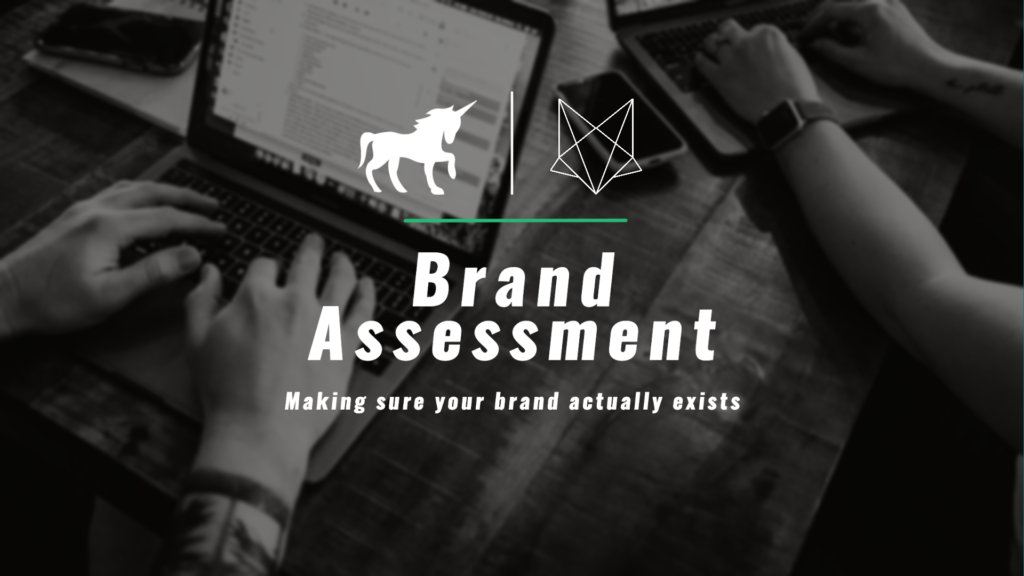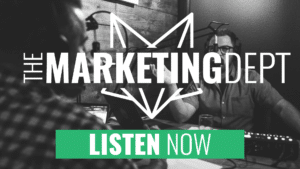Creative Direction.
According to our creative director, Eric, one of the first categories that should be established in forming a brand is personas. Luckily, this topic can be rather fun. Personas are created in light of who the person you are trying to reach is. This includes age, job, demographics, income, interests, etc. Defining a persona is also determining those people’s lifestyles and purchasing habits. Practically, this is achieved by looking at who has been doing business with you for years. If you don’t know who your personas are, you won’t know who your target audience is, and it will cost you more to reach the masses versus those who would actually purchase your products or services.
Voice and tone are the foundation of everything we write, create, and produce. Voice is the personality of the company. What’s the difference between voice and tone, you may ask? Think of it this way: You have the same voice all the time, but your tone changes depending on your circumstance. Often, when it comes to a brand there will be different tones between campaigns or projects. For instance, take Nike…at the time of this blog it has been about a week since George Floyd lost his life in an awful way. Eric shares, “Right now there are voices that are rightfully trying to be heard and there are lots of brands using their voice to join in the cause and I applaud them in a big way! These brands have their voice as their brand but their tone is changing. Nike is always saying ‘just do it’ and motivating people. But for this campaign, they are saying, ‘For once, don’t do it.’ It is a black and white video with no inspiring athletes, simply just words trying to communicate to the world to not just pretend there is no problem in America but to move forward and be united. (Video provided below.) So their tone for this campaign is heavy, direct, painfully truthful instead of their normal inspiring and motivational tone. But their voice has always stood for equality which isn’t changing.”
So let’s take a few of our clients as an example. The G-Force voice is as approachable as it is admirable. The intent is to communicate with graphics that grab attention, then position oneself as an expert in the field with branding that is memorable and edgy. The tone is sharp, experienced, and patriotic. Bring this idea home by remaining steady in branding and up-to-date channel messaging. This is a demographic that is varied and each persona is highly influential to the next. It is imperative that advertising and media are defined and assertive. The voice of BentOak Capital is confident and knowledgeable with an edge of coolness. BentOak identifies with its conservative clientele, while at the same time remaining innovative as an industry leader. The tone is steady and there is a feeling of renewal. Like the oak tree that sheds its leaves in spring, there is a sense of rebirth with this brand. Consider the characteristics of an aged oak tree. BentOak Capital is independent and strong, as well as efficient and progressive. The brand lends itself well to stand out and remain memorable amongst national competitors. The tree icon is easily recognizable, allowing for nearly instant trustworthiness in recollection.
Barefoot is an apparel company that is mainly in college towns of universities. Their voice is young, cool, and relevant. They have sub-personas during this time and are not scared to make a bold move in a heartbeat. They are strategic in that they don’t speak to all college students, ut instead they target their branding and design to 18 to 22-year-old females.
Clarity in Content.
As we examined the content development process with our content director, we were reminded of how it is about establishing advocacy for our clients. With content, our team digs deep into knowing the voice of a company and its products or services. As content director, Brittney “works closely with account directors to make sure the strategy created is true to who they are, crafted for their target audience, and directed toward their goal.”
Getting in the mind of our client’s prospect is key to creating meaningful content. You need to figure out what your target audience really wants. Allen Dib’s The 1-Page Marketing Plan states, “It’s rarely the thing you are selling, it’s usually the result of the thing you are selling.” This couldn’t be more accurate. To get in the mind of the audience, we need to discover what results they are actually buying. Once you understand this, you then need to craft your unique selling content based on the result your audience wants to achieve. You want to go from being a business to being viewed as a trusted advisor that’s serving their needs.
The key detail that should be applied when creating content is always filtering everything through the saying, “If you confuse them, you lose them.” It is all about clarity! We’ve touched on this before, but we can’t stress it enough. Brittney shares, “Anytime I create content for any project, I examine it and make sure someone will walk away with information, not confusion.”
People are constantly exposed to an abundant amount of information and are rarely motivated to wade through a confusing message. “Don’t fall for the lie that a confused customer will seek clarification or contact you for more information.” That is never the case.
Sketching Your Vision.
As we delved into the process behind graphic designing with McKenzie, we found confirmation that branding is much more than a logo. Part of the beginning is realizing the vision of the client and starting the foundation to bring it to life. For McKenzie, preliminary hand-drawn sketches are done during the initial meeting, following with intentional research. A source of inspiration is social media and current thriving brands.
Businesses tend to solely request a logo with no context of their voice and tone, who they are as a business, etc. McKenzie adds, “Some clients know exactly what they want and it’s easier to create it, while others have no idea. It’s important to have a voice and tone to assist in creating their brand, logos, and visuals.” The advice McKenzie would give for a client requesting a brand or rebrand would be “to do research on what other competitors are doing. Whether it’s good or bad, it gives you the opportunity to filter what you like and don’t like. Even to the point of discovering that everyone is doing X and you want to do Y.” With this research, we can then come alongside you, guiding in the best direction where your brand will flourish. “If you come to us with an idea, we can help you refine it.”
Something that is special about McKenzie is that she is talented at sketching by hand, which not all graphic designers can do. She states, “First and foremost, I am an artist.” A great example of this unfolded with Barefoot’s Christmas campaign, ‘Tis the Season to be Barefoot. McKenzie shares, “Barefoot is a client that is super easy to be inspired by, can have more free-range and pushes it to the limit” because of how they’re not scared to be bold. In the creative meeting for this campaign, McKenzie began to sketch out ideas as the client and our team brainstormed what this should look like. The sketches actually ended up being used in their campaign branding and social media posting. (Sketch and graphic provided below.)
Practically Branded.
This is just a peek behind the curtain of what we do as a marketing partner. We enjoy meeting and dreaming with clients to produce and create their vision for their company. Getting to do that is an honor because this is your livelihood, and we want to take it as seriously as you do to make sure your business is successful in all aspects. Spend the time upfront when creating your brand, because your logo can change over time, but what won’t change is the target audience and brand.
If you like to get practical, and want to see the process behind brand development, we invite you to enter to win a Brand Giveaway. We want to hear your story and document the process behind building a brand. All you have to do is tell us your story and why you need a brand or rebrand. Submit your story to brand@greenfox.io.











